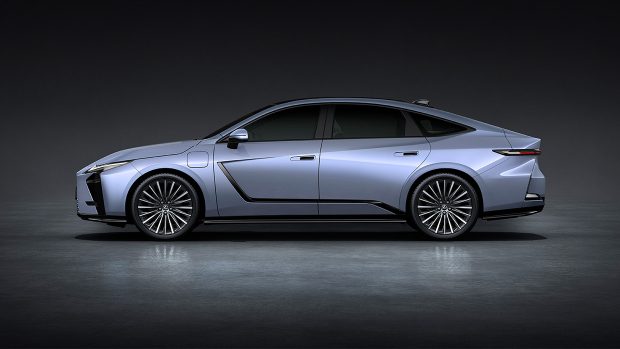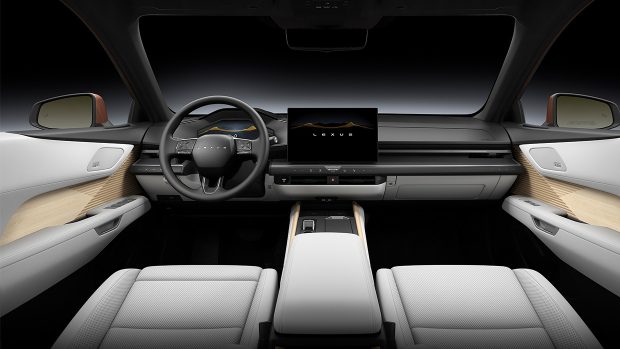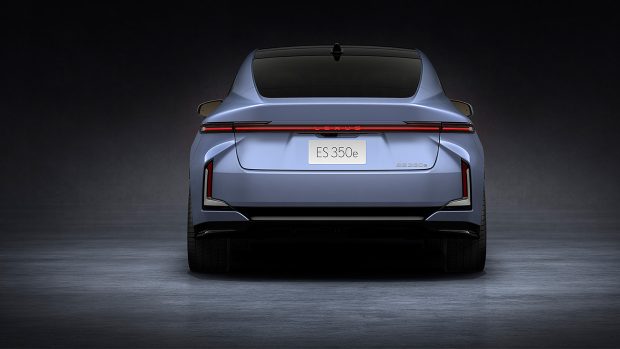-
Car Reviews
- All reviews
- Midsize SUVs
- Small cars
- Utes
- Small SUVs
- Large SUVs
- Large cars
- Sports SUVs
- Sports cars
- Vans
Latest reviews
- Car News
-
Car Comparisons
Latest comparisons
- Chasing Deals
Major revision to shared Toyota-Lexus combustion platform now allows ES buyers to select a fully-electric powertrain, while hybrid lives on
The eighth-generation Lexus ES has been revealed with a considerable shake-up to the enlarged luxury sedan’s powertrain strategy – with the current model’s popular petrol hybrid technology set to be retained while pure-electric power will also be made available at launch in 2026.
While it retains a traditional sedan boot, aesthetically the new ES apes the appearance of a fastback and essentially moves into the dimensional class above, with a 165mm stretch to overall length (80mm in the wheelbase) making this 5.14-metre four-door longer than a BMW 5 Series.
An unnamed new design language debuts on the new ES, which adopts thin and angular headlights above a front apron inspired by last year’s LF- ZC Concept while a full-width rear light bar incorporates ‘LEXUS’ lettering.
A hockey-stick detail embossed in the side profile partially distracts the eye from the dramatic 110mm uplift in height, built into the car in order to accommodate the battery (of currently undisclosed capacity) shared by the fully-electric grades which are yet 5mm taller again.
Inside, the organic lines of the outgoing version are substituted for a square-edged dashboard shelf motif incorporating a 14.0-inch touchscreen. A cowled digital instrument cluster is retained, as are quick shortcut controls temperature and a volume roller are retained.
The enlarged dimensions accommodate a more spacious cabin with options such as a passenger seat ottoman and an executive rear seat package with massage. Textured bamboo trim features extensively in the doors while interior colours include light grey, tan and a light green.
When the new ES lands locally next year, Australian buyers will be offered at least one hybrid and one electric powertrain choice from the global menu of four engines, with low- and high-power tunes of each energy type available.
The global powertrain slate kicks off with the two hybrids. The ES300h uses a new-to-ES 2.0-litre petrol-electric four-cylinder unit producing up to 145kW with front-wheel drive. This lower-output hybrid could be considered to replace the now-defunct, petrol-only ES250 that most recently retailed for $62,140 plus on-road costs in 2024.
Next is the ES350h badge, which carries into the new ES an updated version of the current ES300h’s 2.5-litre four-cylinder hybrid now making 182kW (up 22kW). As before, combined torque is not disclosed.
While the ES350h remains front-wheel drive as standard, an all-wheel drive option is now on the menu – in two power outputs of 148kW (ES300h AWD) or 182kW (ES350h AWD). ES350h pricing currently commences at $65,540 + ORC.
On the pure-electric side of the ledger, single- and dual-motor powertrains are available. Badged ES350e is a front-wheel drive EV model making 165kW of power, while the all-wheel drive ES500e steps up to 252kW.
Quickest of the set is the ES500e, which claims a 5.9 second 0-100km/h time. The sprint is otherwise accomplished in as long as 9.4 seconds (ES300h FWD), dropping to 8.9 sec (ES350e), 8.5 sec (ES300h AWD), 8.0 sec (ES350h FWD), and 7.8 sec (ES350h AWD) respectively.
Enabling the inclusion of battery-electric powertrains has been accomplished by way of major adaptations to the TNGA-K platform shared between Toyota and Lexus. The midsize, front-drive ‘K’ chassis was utilised by the outgoing ‘XZ10’ ES which was variously available with hybrid and non-hybrid four-cylinder petrols and a V6 petrol overseas.
While the e-TNGA platform utilised by the Lexus RZ, Toyota BZ4X and Subaru Solterra cousins was a mechanical branch of TNGA-K, the pure ‘K’ chassis was originally designed to accept only small to midsize batteries allowing plug-in hybrid drivetrains such as those seen locally in the Lexus NX and RX PHEV variants.
Changing currents in the automotive industry – growing popularity of fully-electric sedans in China, occurring simultaneously with lumpy demand for full EVs in Western markets – is understood to have convinced Toyota to re-engineer the platform in order to accept much larger batteries.
The size of that battery isn’t yet known but it appears the ES350e and ES500e variants utilise the same pack. Driving range is claimed to be 685km and 610km respectively on the optimistic Chinese CLTC system – equivalent to around 550km and 490km (WLTP). Peak DC charging speed is 150kW during a 30 minute 10-80 percent charging session.
Meanwhile, the hybrid versions could carry across a 50-litre fuel tank.
Fuel consumption for the incoming ES300h and ES350h has not yet been disclosed, but it likely to be similar to the 4.8L/100km claim of the current vehicle – affording a theoretical fuel range of 1041km.
Latest news
About Chasing cars
Chasing Cars reviews are 100% independent.
Because we are powered by Budget Direct Insurance, we don’t receive advertising or sales revenue from car manufacturers.
We’re truly independent – giving you Australia’s best car reviews.


